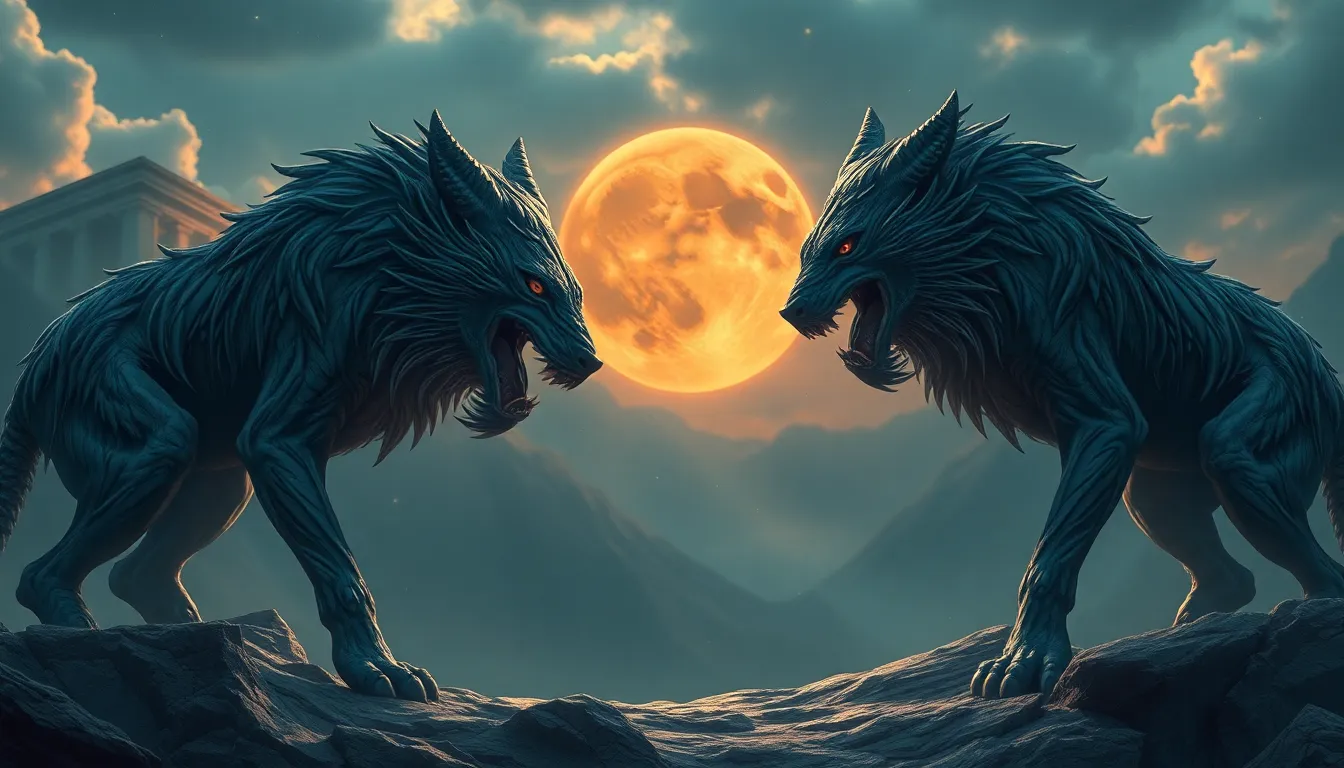Cerberus and the Influence of Myth on Modern Fantasy
I. Introduction
Cerberus, the fearsome three-headed dog of Greek mythology, serves as the guardian of the Underworld. His presence looms large in ancient tales, embodying the boundary between the world of the living and the dead. This mythical creature not only plays a pivotal role in classical narratives but also significantly influences modern fantasy literature.
Mythology has long been a cornerstone of storytelling, providing rich, imaginative themes that resonate with audiences. In contemporary fantasy literature, the influence of ancient myths like that of Cerberus is evident in character creation, plot development, and thematic exploration. The purpose of this article is to delve into the origins of Cerberus, his representation in classical literature, and his lasting impact on modern fantasy narratives.
II. The Origins of Cerberus
Cerberus is rooted deeply in Greek mythology, often described as a monstrous creature with three heads, a serpent for a tail, and a mane made of snakes. He is primarily known as the guardian of the gates of the Underworld, preventing the dead from escaping and the living from entering without permission.
Historically, Cerberus has been depicted in various forms across ancient art and literature. His characteristics symbolize several profound themes:
- Guardianship: Cerberus protects the realm of the dead, serving as a formidable barrier against unwanted intruders.
- Fear: His monstrous form evokes terror, representing the fear of death and the unknown.
- Transition: As a creature that stands between life and death, Cerberus embodies the transition between these two states.
III. Cerberus in Classical Literature
Cerberus is prominently featured in various classical texts. In Homer’s “The Odyssey,” Odysseus encounters the creature during his journey to the Underworld. Similarly, Virgil’s “Aeneid” describes the hero Aeneas facing Cerberus as he seeks to enter the realm of the dead. These representations highlight Cerberus’s role as a significant obstacle in the hero’s journey.
Throughout these stories, Cerberus serves several functions:
- He tests the resolve of heroes, ensuring that only the worthy may proceed.
- His presence underscores the themes of bravery and cunning required to confront death.
- He illustrates the consequences of meddling with the natural order of life and death.
The impact of these narratives is profound, influencing later interpretations and adaptations of mythological figures in literature and art.
IV. Cerberus as a Symbol in Modern Fantasy
In contemporary works, Cerberus-inspired creatures continue to appear, reflecting the enduring legacy of this mythological figure. Authors and creators draw upon Cerberus’s characteristics to craft beings that embody similar themes of fear, loyalty, and guardianship.
Examples of Cerberus-like creatures in modern fantasy include:
- The Hounds of Tindalos from H.P. Lovecraft’s Cthulhu Mythos, representing a cosmic horror.
- The three-headed dog Fluffy in J.K. Rowling’s “Harry Potter and the Sorcerer’s Stone,” serving as a playful yet ominous guardian of treasure.
- Various video game monsters inspired by Cerberus, often portrayed as guardians of hellish realms.
Cerberus is not just a creature of fear; he also symbolizes loyalty and the protective instincts that come with guardianship, making him a versatile figure in modern storytelling.
V. Thematic Elements Influenced by Cerberus
The themes associated with Cerberus extend beyond mere fright; they explore complex narratives around death, loyalty, and the supernatural. In many modern fantasy narratives, Cerberus-like figures are integral to quests and trials that protagonists must face.
Key thematic elements include:
- Death: The presence of a guardian often signifies a confrontation with mortality.
- Loyalty: Cerberus is fiercely loyal to Hades, a trait reflected in many fantasy creatures that protect their domains.
- Supernatural Challenges: Many heroes must outwit or confront such creatures to demonstrate their worthiness.
These themes resonate throughout fantasy literature, contributing to character development and plot progression.
VI. Cerberus in Popular Culture
Cerberus’s influence extends beyond literature into various forms of popular culture, including films, video games, and graphic novels. His portrayal varies widely, from terrifying beast to loyal companion, showcasing the versatility of mythological figures in modern storytelling.
Notable representations include:
- In films like “Hercules,” where Cerberus is portrayed as a formidable opponent.
- The “God of War” video game series, in which Kratos battles Cerberus as part of his epic journey.
- Graphic novels such as “The Sandman,” where mythological creatures play crucial roles in the narrative.
These adaptations shape public perception of the myth, often blending elements of fantasy and horror, reinforcing Cerberus’s role as a creature of dual nature.
VII. The Enduring Legacy of Myth in Fantasy
As modern storytelling continues to evolve, the relevance of ancient myths is evident. Cerberus exemplifies how mythological figures can blend seamlessly with contemporary narratives, enriching fantasy worlds and providing depth to character arcs.
The presence of creatures like Cerberus in fantasy literature highlights:
- The timeless nature of myth as a source of inspiration.
- The ability of myth to adapt and resonate within new contexts.
- The enduring fascination with the supernatural and the unknown.
VIII. Conclusion
Cerberus’s influence on modern fantasy is profound, illustrating the ways in which ancient myths continue to shape contemporary storytelling. As a symbol of fear, loyalty, and the supernatural, Cerberus remains a powerful figure in literature and popular culture.
Reflecting on the importance of myth as a source of inspiration, it is clear that figures like Cerberus will remain relevant as long as humanity seeks to explore the depths of human experience through storytelling. The future of mythological figures in contemporary literature promises to be as rich and varied as the tales they originate from, ensuring that the legacy of Cerberus endures for generations to come.




